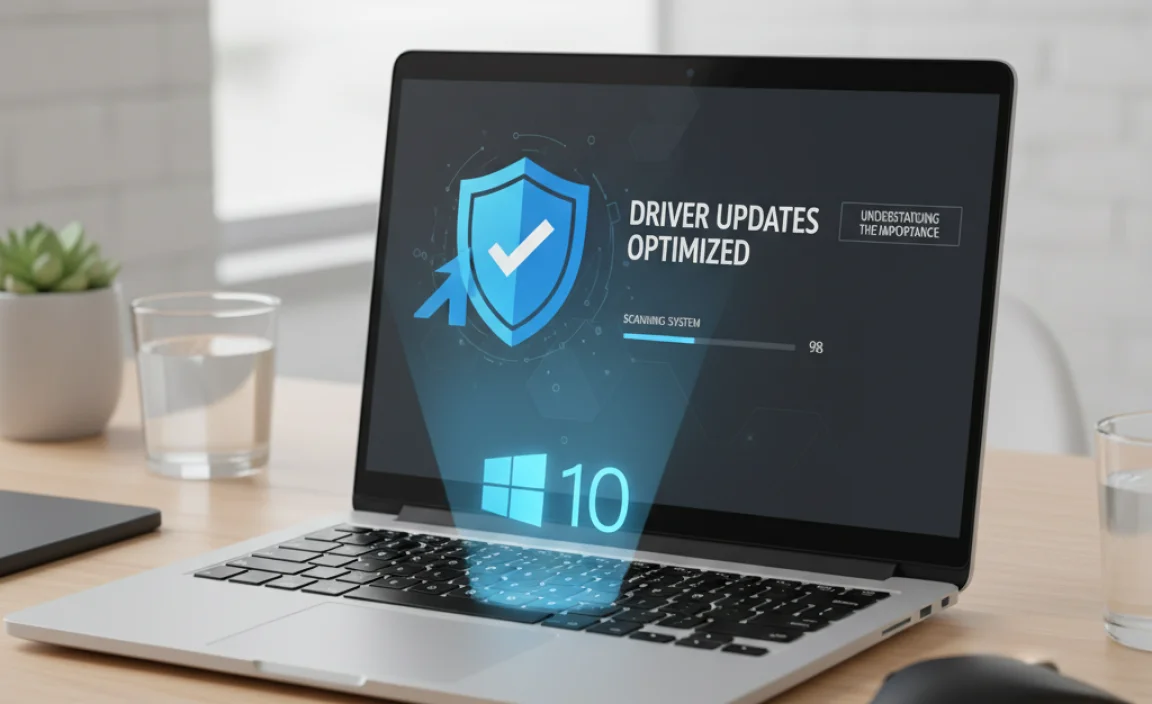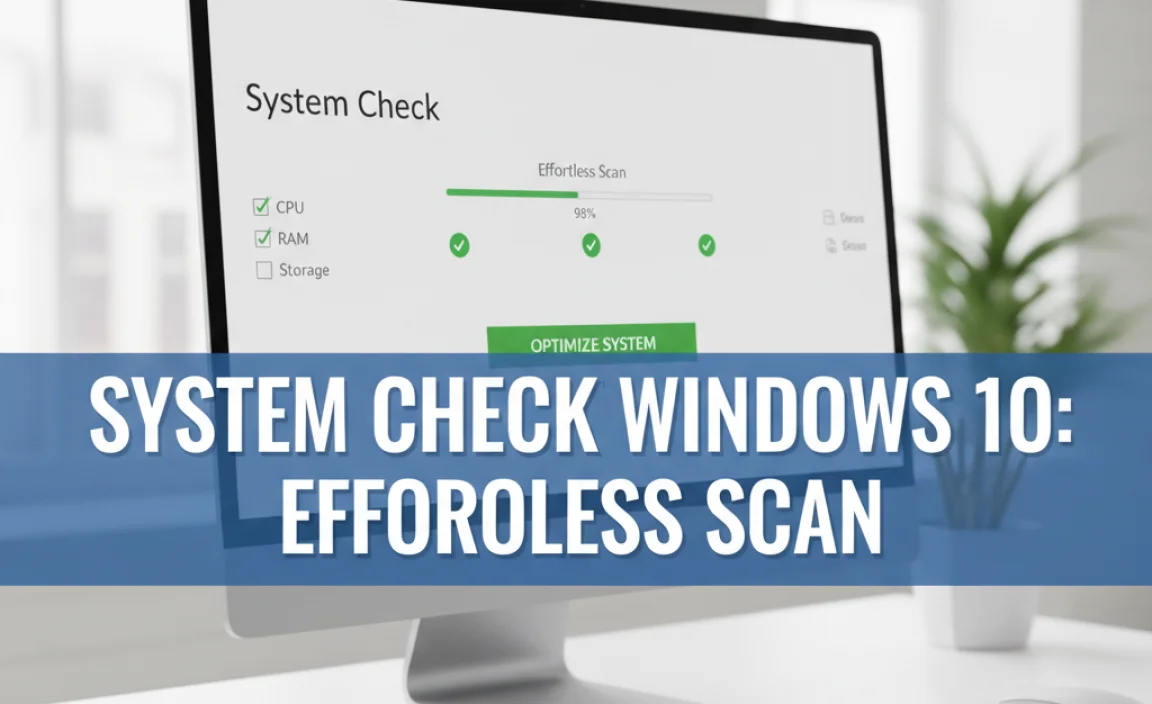Free Driver Update for Windows 10: Best strategies and tools are essential for ensuring your operating system runs smoothly and efficiently.
Drivers are the silent architects of your computer’s hardware, acting as intermediaries between your devices and Windows. Without them, your graphics card wouldn’t display images, your sound card wouldn’t produce audio, and your network adapter wouldn’t connect you to the internet.
While Windows 10 has made significant strides in automatically updating drivers, manual intervention is often necessary to achieve optimal performance, resolve compatibility issues, or unlock the full potential of your hardware. Fortunately, keeping these crucial software components up-to-date doesn’t have to cost you a penny.
Understanding the Importance of Driver Updates

Before diving into the “how-to,” it’s vital to grasp why keeping your drivers current is so important. Outdated drivers can be a breeding ground for problems. They might cause hardware malfunctions, leading to crashes, freezes, or specific devices not working at all. For gamers and creative professionals, this can be particularly frustrating, as outdated graphics drivers, for instance, can lead to poor performance in demanding applications, reduced frame rates, and visual glitches.
Beyond performance, driver updates often include crucial security patches. Manufacturers release these updates to address vulnerabilities that could be exploited by malware. Therefore, a proactive approach to driver management is also a proactive approach to cybersecurity. Furthermore, updates can introduce new features or improve the compatibility of your hardware with newer software, ensuring you can leverage the latest advancements without encountering a compatibility wall.
Windows 10’s Built-in Driver Update Capabilities
Windows 10 possesses a robust built-in system for managing device drivers. Often, when you connect a new piece of hardware, Windows will automatically detect it and search for a suitable driver through Windows Update. You can also manually check for driver updates by navigating to Settings > Update & Security > Windows Update. Here, you’ll see an option to “Check for updates,” which can sometimes reveal driver updates alongside system patches.
For more granular control, you can access the Device Manager. Simply type “Device Manager” into the Windows search bar and open the application. Here, you’ll find a list of all your hardware categories. Expanding a category (e.g., “Display adapters”) will show your specific devices. Right-clicking on a device and selecting “Update driver” will allow you to either search automatically for updated driver software or browse your computer for driver files if you’ve downloaded them manually. While convenient, Windows Update sometimes prioritizes stability over the latest performance enhancements, meaning it might not always offer the absolute newest driver available.
Leveraging Manufacturer Websites for Free Driver Downloads
When Windows Update doesn’t provide the latest driver, or if you’re experiencing specific issues with a piece of hardware, visiting the manufacturer’s website is the next best step. This is often the most reliable way to secure the truly free driver update for Windows 10 directly from the source. Most hardware manufacturers, from giants like NVIDIA, AMD, and Intel to peripheral makers like Logitech or HP, maintain dedicated support sections on their websites.
To find the correct driver:
1. Identify your hardware: Know the exact make and model of the device you need to update. This information can usually be found in Device Manager or on the hardware itself.
2. Navigate to the manufacturer’s support page: Go to the official website of the hardware manufacturer.
3. Locate the “Support,” “Downloads,” or “Drivers” section: This is typically found in the website’s header or footer.
4. Search for your product: Use the search function, often by entering your product’s model number, or browse through their product categories.
5. Select your operating system: Crucially, ensure you choose the correct version of Windows (Windows 10 64-bit or 32-bit).
6. Download the latest driver: Look for the most recent driver version and download the installer file.
It’s essential to download drivers only from official manufacturer websites to avoid malware-infected fake drivers.
Third-Party Driver Update Tools: A Word of Caution
The market is flooded with third-party driver update tools that promise to scan your system, identify outdated drivers, and update them automatically. While some of these tools can be helpful, they also come with significant risks, especially when seeking a free driver update for Windows 10. Many free versions are limited in functionality, push users to upgrade to paid versions, or bundle unwanted bloatware and potentially malicious software.
If you choose to explore these tools, exercise extreme caution. Look for reputable software with positive reviews from trusted tech publications. Always create a system restore point before running any driver updater, as an incorrect driver can cause system instability. Be wary of any tool that asks for personal information beyond what’s necessary for registration or that makes outlandish promises. Often, the time spent researching and downloading drivers directly from manufacturers is more efficient and safer than relying on unverified third-party solutions.
Best Practices for Driver Management
Regardless of your chosen method, adopting good driver management practices will save you time and prevent headaches:
Create Backups: Before making significant driver changes, use Windows’ built-in System Restore feature to create a restore point. This allows you to easily revert your system to a previous stable state if a new driver causes issues.
Update Strategically: You don’t need to update every single driver the moment a new version is released. Focus on updating drivers for critical components like your graphics card, network adapter, and motherboard chipset, especially if you’re experiencing performance issues or new software compatibility problems.
Keep Notes: For custom builds or systems with many peripherals, it can be helpful to keep a record of your installed drivers and their versions. This makes troubleshooting much easier.
Read Release Notes: Manufacturers often include release notes with driver updates. These notes can highlight performance improvements, bug fixes, and known issues, helping you decide if an update is relevant to you.
In conclusion, maintaining your drivers is a fundamental aspect of keeping your Windows 10 system in top condition. While Windows Update provides a baseline, actively seeking the free driver update for Windows 10 from manufacturer websites is the most reliable and safe method to ensure your hardware performs optimally, remains secure, and is compatible with the latest software. By understanding your hardware and adopting smart update practices, you can enjoy a smoother, more stable, and more powerful computing experience without spending a dime.
.lwrp.link-whisper-related-posts{
margin-top: 40px;
margin-bottom: 30px;
}
.lwrp .lwrp-title{
}.lwrp .lwrp-description{
}
.lwrp .lwrp-list-container{
}
.lwrp .lwrp-list-multi-container{
display: flex;
}
.lwrp .lwrp-list-double{
width: 48%;
}
.lwrp .lwrp-list-triple{
width: 32%;
}
.lwrp .lwrp-list-row-container{
display: flex;
justify-content: space-between;
}
.lwrp .lwrp-list-row-container .lwrp-list-item{
width: calc(25% – 20px);
}
.lwrp .lwrp-list-item:not(.lwrp-no-posts-message-item){
max-width: 150px;
}
.lwrp .lwrp-list-item img{
max-width: 100%;
height: auto;
object-fit: cover;
aspect-ratio: 1 / 1;
}
.lwrp .lwrp-list-item.lwrp-empty-list-item{
background: initial !important;
}
.lwrp .lwrp-list-item .lwrp-list-link .lwrp-list-link-title-text,
.lwrp .lwrp-list-item .lwrp-list-no-posts-message{
}@media screen and (max-width: 480px) {
.lwrp.link-whisper-related-posts{
}
.lwrp .lwrp-title{
}.lwrp .lwrp-description{
}
.lwrp .lwrp-list-multi-container{
flex-direction: column;
}
.lwrp .lwrp-list-multi-container ul.lwrp-list{
margin-top: 0px;
margin-bottom: 0px;
padding-top: 0px;
padding-bottom: 0px;
}
.lwrp .lwrp-list-double,
.lwrp .lwrp-list-triple{
width: 100%;
}
.lwrp .lwrp-list-row-container{
justify-content: initial;
flex-direction: column;
}
.lwrp .lwrp-list-row-container .lwrp-list-item{
width: 100%;
}
.lwrp .lwrp-list-item:not(.lwrp-no-posts-message-item){
max-width: initial;
}
.lwrp .lwrp-list-item .lwrp-list-link .lwrp-list-link-title-text,
.lwrp .lwrp-list-item .lwrp-list-no-posts-message{
};
}



